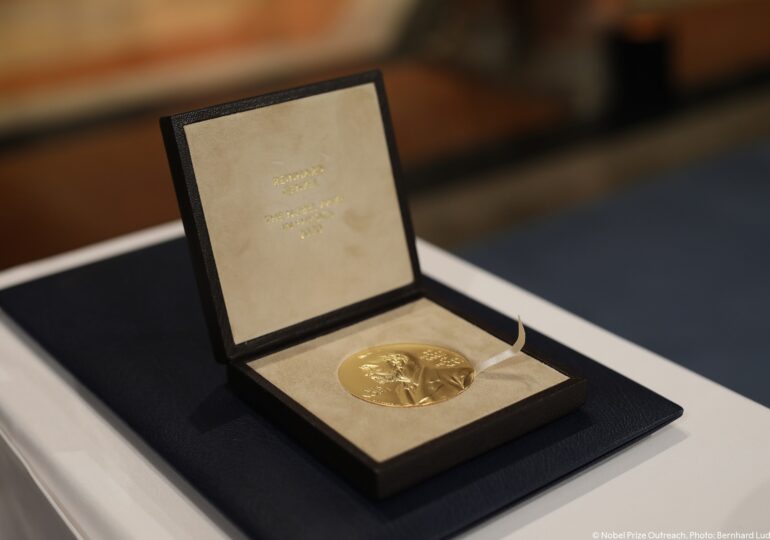The Royal Swedish Academy of Sciences has decided to award the Nobel Prize in Chemistry 2025 to Susumu Kitagawa, Richard Robson, and Omar M. Yaghi „for the development of organometallic structures.”
Through the development of these structures, the laureates have provided chemists with new opportunities to tackle challenges we face, according to the Nobel Committee.
The laureates have developed a new type of molecular architecture. The constructions they have created contain large cavities in which molecules can enter and exit.
- Nobel Prize in Physics 2025 awarded to a trio of researchers for revolutionary discoveries in quantum mechanics
- Nobel Prize in Medicine 2025 awarded to researchers who paved the way for cancer and autoimmune disease treatments
Researchers have used them to collect water from desert air, extract pollutants from water, capture carbon dioxide, and store hydrogen.
"Organometallic structures have enormous potential, offering unprecedented opportunities for customized materials with new functions," says Heiner Linke, the President of the Nobel Committee for Chemistry.
According to the Nobel Committee's statement, it all began in 1989 when Richard Robson tested the use of atoms' inherent properties in a new way.
He combined positively charged copper ions with a four-armed molecule; this molecule had a chemical group that was attracted to the copper ions at the end of each arm. When combined, they linked to form a well-ordered and spacious crystal. It was like a diamond filled with countless cavities.
Robson immediately recognized the potential of his molecular construction, but it was unstable and easily collapsed. However, Susumu Kitagawa and Omar Yaghi provided this construction method with a solid foundation. Between 1992 and 2003, they each made a series of revolutionary discoveries.
Kitagawa demonstrated that gases could penetrate and exit the constructions and predicted that they could be made flexible. Yaghi created a highly stable organometallic structure and showed that it could be modified through rational design, thus acquiring new and desired properties.
Following the laureates' revolutionary discoveries, chemists have built tens of thousands of different organometallic structures. Some of these could help address some of humanity's greatest challenges, with applications including separating PFAS substances from water, breaking down pharmaceutical residues in the environment, and capturing carbon dioxide.

